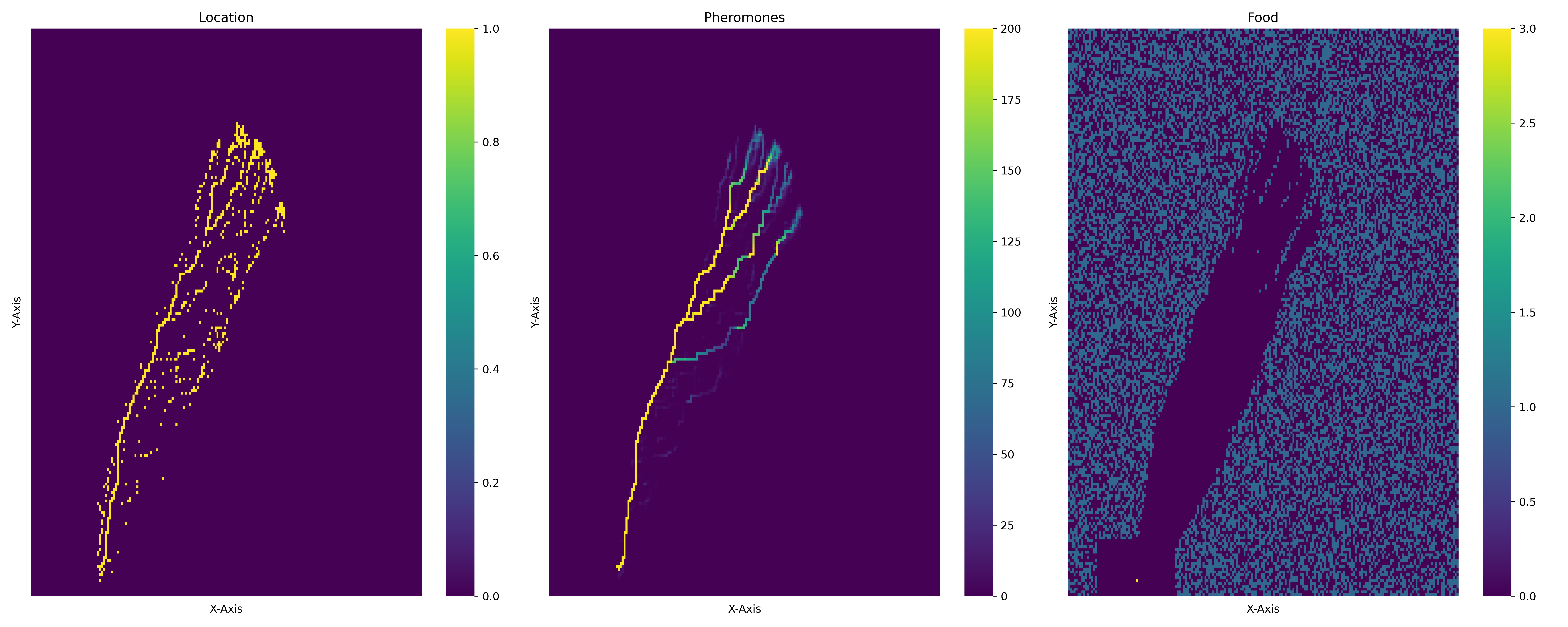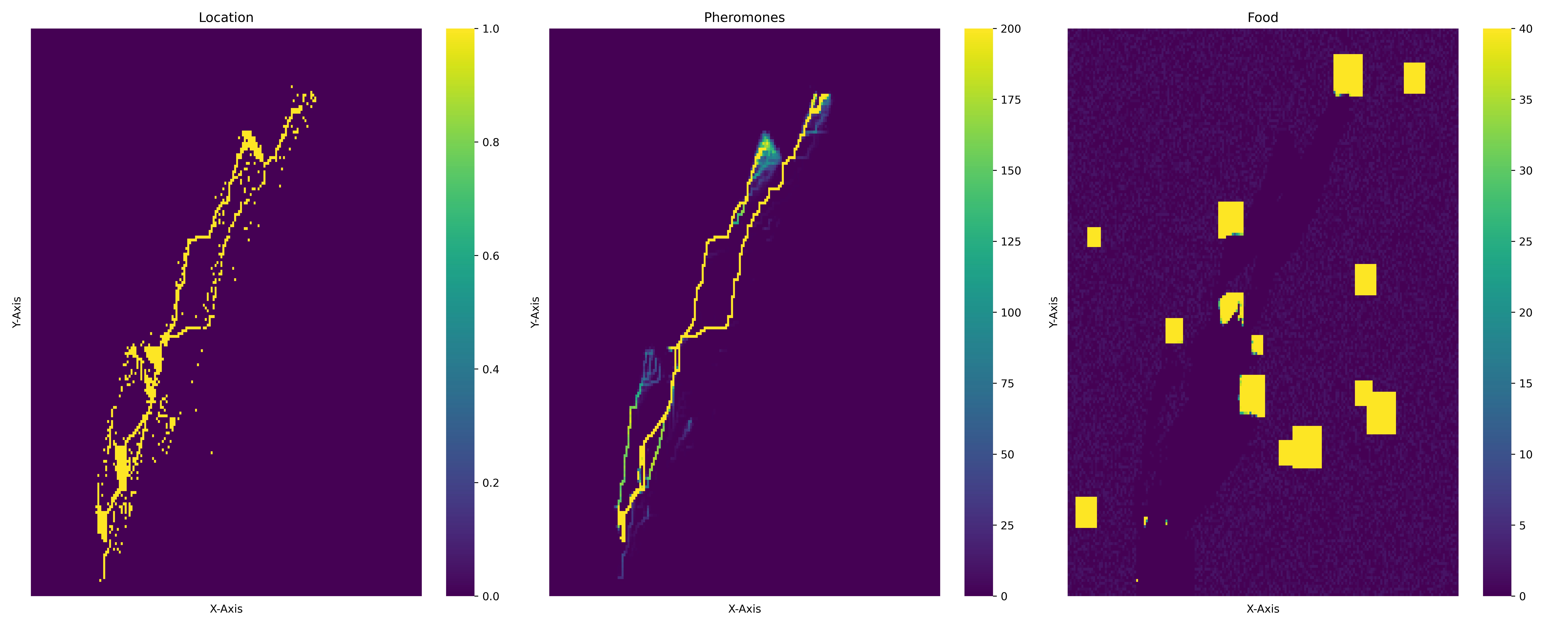The raid of army ant species is one of the most interesting self-organising phenomena within the family of ants. Thousands of ants leave their nest to swarm huge areas of land and raid other ants' nests or other arthropods to obtain resources and expand their population and territory. This simulation uses data form previous research to model this behaviour. In addition, differences in terrain as well as differences in food availability and pheromone evaporation rates are also modelled.
The current paper created a model following the paper by Deneubourg and colleagues (1989). The model consists of two major components. Firstly, the nodes and secondly the ants that can travel between the nodes. The nodes will be described first.
The nodes constitute a class and hold and return different parameter values. In particular, the nodes hold information on their geographic location, connected nodes that are geographically more distant from the origin, connected nodes that are geographically closer to the origin, the level of food, the level of pheromones, a maximum capacity for ants on each node, and a current capacity counter (for a full list see the supplementary code). Every parameter listed above can be updated and returned to facilitate the progress of the model. The ants in the model also constitute a class and have three internal parameters. The location of the ant in the network, the level of food held by the ant, and an identifier.
The model implementation follows the analytical work laid out in Deneubourg et al (1989). It is designed as a Markov model in which the ants in the network act and move through the network deterministically following probabilities calculated from the level of pheromones on the preceding nodes, the capacity of each node and an evaporation rate for the pheromones trails in the network. Each node
Initially, at each time step in the model, the level of pheromones available is depreciated by an evaporation rate of 1/30. In addition, the following steps occur for all ants that are populating the network of nodes at a given time. Initially, a selected ant checks whether it holds food. As determined by the result there are two paths an ant can take. If it does not hold food, it will travel further away from the next in the network.
This study conducted four experiments. Initially, the results from the original paper by Deneubourg and colleagues (1989) are replicated. Furthermore, the model is extended to show the effects of three different kinds of terrain changes on the foraging patterns of army ants. Firstly, the effect of random noise is demonstrated. Secondly, the effect of larger impenetrable objects in the pathway of the ants is demonstrated. Lastly, non-random Perlin noise is used to construct more realistic terrain. The resulting terrain is used to demonstrate its effects on the foraging patterns in the ant simulation.
The following figures show exemplary results from the study. For the full results please consult the pdf. To summarise, delta like raiding structures were easy to reproduce while nest raiding species were very difficult to replicate in silico.
While the model is undoubtedly potent in its explanation of army ant foraging patterns, some aspects could be improved in the future. Each node in the model has only two connected nodes in each direction. Thereby the spatial moveability of each ant is severely limited. Because of the limitations in available movement options, the model displays a tendency of the raid to break apart when food sources are not available at most points in the network. This can be demonstrated with a theoretical example. A node in the network with a maximum capacity of 20 and a food level of 400 can only be approach by 40 ants at a maximum. If the two nodes leading to the food node at their capacity limit, all other foraging ants in the network will be redirected to the adjacent node which does then prevent the ant from reaching the food node again without returning to the nest first. In this publication, these effects were somewhat mitigated by creating nest cluster in which multiple nodes all have an identical food value. This leads to more ants finding a nest and better representation of the actual underlying behaviour. To fully mitigate the issue however, a future model would be well advised to increase the number of connections between the nodes and thereby let individual points be reached from more positions. Hence overall, the model is good at modelling army ant raids for ants that hunt other insects overground leading to expanding river delta formations. However, modelling nest raids and other more targeted raiding strategies can only be recreated with limited success.
For a full discussion of the results please consult the pdf.

